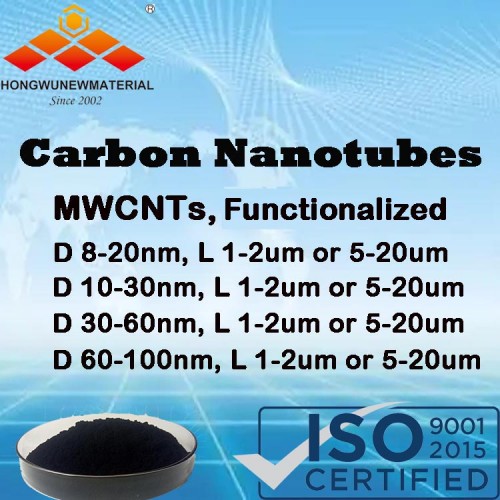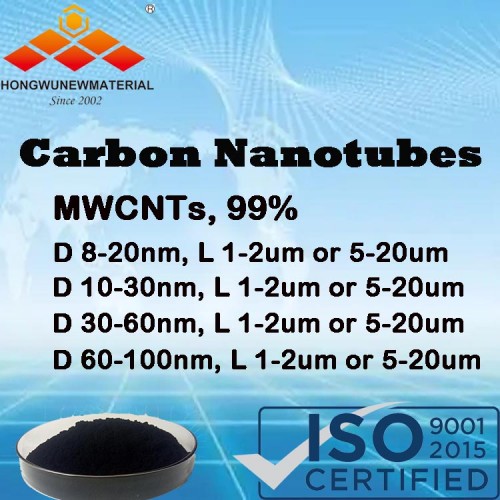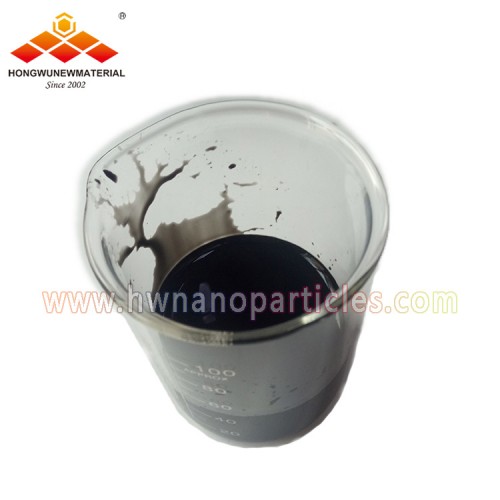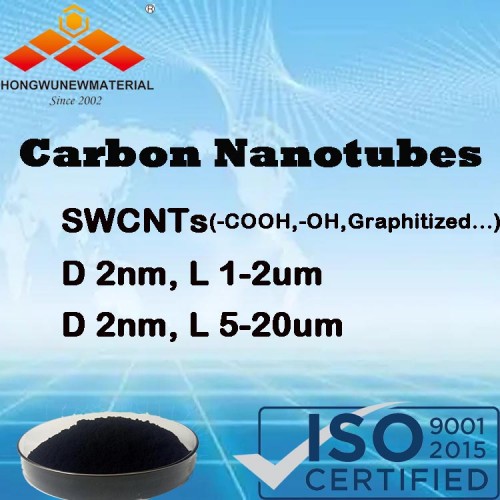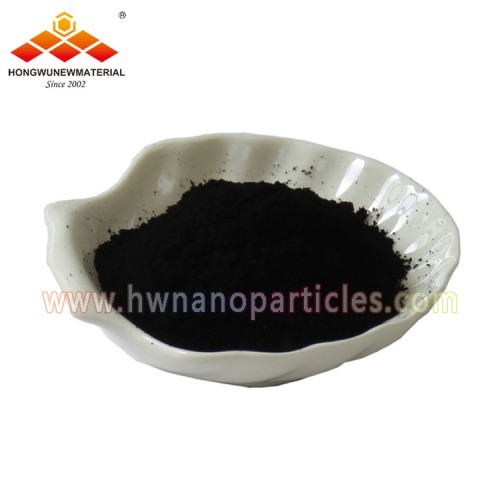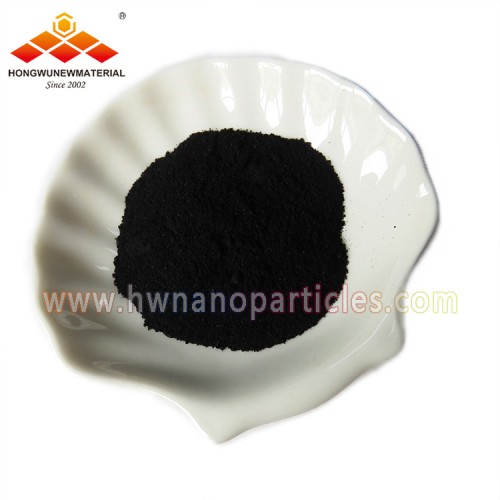
Functionalized Multi-Walled Carbon Nanotubes (MWCNT-OH,-COOH,-NH2,Doped N,Metal)
| Index | Stock # C910 swcnts | Functionalization | Characterization methods |
| Spec 1 | D 8-20nm, L 1-2um | -COOH, ~wt%4.03, 6.52, 9, 13;
-OH, ~wt% 2.77, 4, 5.6; -NH2, ~0.45%, 0.5% Nickel plated, wt%30, 40, 60 Nitrogen doped, ~3% Graphitized Graphitized & carboxylic |
TEM & Boehm Titration |
| Spec 2 | D 8-20nm, L 5-20um | ||
| Spec 3 | D 10-30nm, L 1-2um | ||
| Spec 4 | D 10-30nm, L 5-20um | ||
| Spec 5 | D 30-60nm, L 1-2um | ||
| Spec 6 | D 30-60nm, L 5-20um | ||
| Spec 7 | D 60-100nm, L 1-2um | ||
| Spec 8 | D 60-100nm, L 5-20um | ||
| Purity | 99%+, Customized | TGA & TEM | |
| Appearance | black | Visual Inspection | |
| SSA(m2/g) | 60-180 | BET | |
| PH Value | 7.00-8.00 | PH Meter | |
| Moisture content | 0.05% | Moisture Tester | |
| Ash content | <0.5% | ICP | |
| Electrical resistivity | 1400 μΩ·m or so | Powder Resistivity Meter | |

Multi walled CNTs powder
MWCNTs(CAS No. 308068-56-6) in powder form
High conductivity
Functionalized
Short-MWCNTs
Long-MWCNTs
Large specific surface area available
Click here for non-functionalized MWCNTs
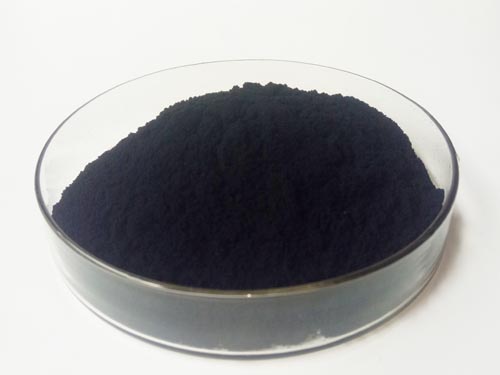
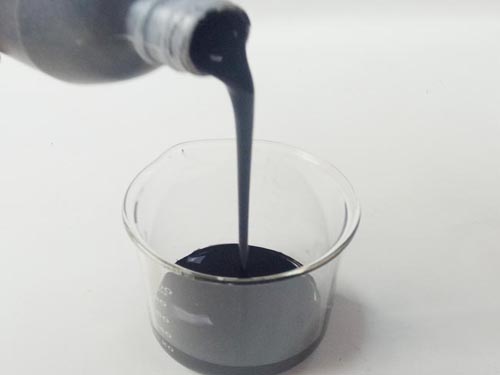
Multi walled CNTs dispersion
MWCNTs in liquid form. Using specific dispersing equipment and proven dispersing technology, multi-wallled cnts, dispersing agent and deionized water or other liquid medium were mixed evenly to prepare highly dispersed carbon nanotubes dispersions.
Concentration: max 5%
Packaged in black bottles
Delivery time: in 4 work days
Worldwide shipping
Hydrogen storage materials:
Studies have shown that carbon nanotubes are very suitable as hydrogen storage materials.
According to the structural characteristics of single-walled carbon nanotubes, which results in significant adsorption of both liquid and gas.
Carbon nanotube hydrogen storage is to use the physical adsorption or chemical adsorption properties of hydrogen in porous materials with large surface area to store hydrogen at 77-195K and about 5.0Mpa.
Large capacity supercapacitors:
Carbon nanotubes have high crystallinity, good electrical conductivity, large specific surface area and micropore size can be controlled by the synthesis process. The specific surface utilization rate of carbon nanotubes can reach 100%, which has all the requirements of ideal electrode materials for supercapacitors.
For double-layer capacitors, the amount of stored energy is determined by the effective specific surface area of the electrode plate. Because the single walled carbon nanotubes have the largest specific surface area and good electrical conductivity, the electrode prepared by carbon nanotubes can significantly improve the capacitance of double layer capacitor.
High strength composite material fields:
As single-walled carbon nanotubes are the most characteristic one-dimensional nanomaterials with unique and perfect microstructure and very large aspect ratio, more and more experiments have shown that single-walled carbon nanotubes have extraordinary mechanical properties and become the final form of preparing super-strong composites.
As composite reinforcement materials, carbon nanotubes are firstly carried out on metal substrates, such as carbon nanotubes iron matrix composites, carbon nanotubes aluminum matrix composites, carbon nanotubes nickel matrix composites, carbon nanotubes copper matrix composites.
Field emitter :
Single-walled carbon nanotubes have excellent field-induced electron emission properties, which can be used to make planar display devices instead of large and heavy cathode tube technology. Researchers at the University of California demonstrated that carbon nanotubes have good stability and resistance to ion bombardment, and can operate in A vacuum environment of 10-4Pa with A current density of 0.4A/cm3.
Comprehensive application of electrical and mechanical properties:
Carbon nanotube muscle


